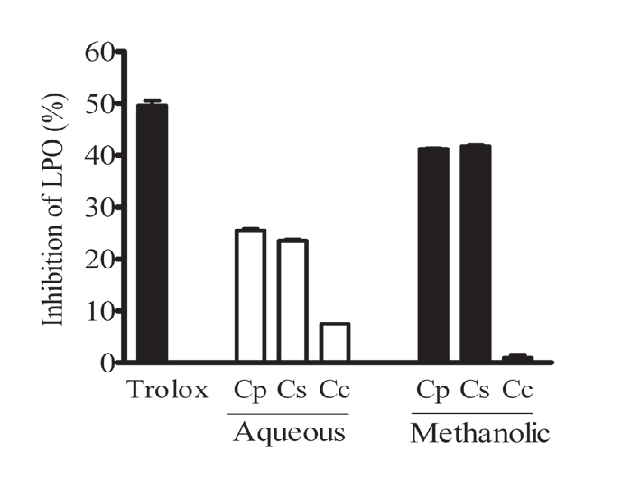Total Phenolic Contents, Antioxidant Activities and Cytotoxicity of Three Centaurea Species: C. calcitrapa subsp. calcitrapa, C. ptosimopappa and C. spicata
DOI:
https://doi.org/10.5530/ax.2011.2.7Keywords:
Antioxidant activity, Centaurea, Cytotoxicity, Free radical scavengingAbstract
Background: Many species of the genus Centaurea have been reported to be used in Anatolian folk medicine. In the present study, methanolic and aqueous extracts of three species of Centaurea L. (C. calcitrapa subsp. calcitrapa, C. ptosimopappa and C. spicata) have been assessed for antioxidant and cytotoxic activities. Materials and Methods: Antioxidant activity was investigated by DPPH and superoxide anion scavenging and anti-lipid peroxidation assays. Cytotoxic effect on HeLa and Vero cells were investigated by MTT assay. Results: Superoxide anion scavenging activities of aqueous extracts were higher than those of methanolic extracts, and the highest activity was detected in the aqueous extracts of C. calcitrapa subsp. calcitrapa with the IC50 value of 25.91 μg/mL. The methanolic extract of C. ptosimopappa showed the strongest anti-lipid peroxidation activity. Total phenolic contents (mg gallic acid equivalent per gram) were ranged between 17.25 and 120.50 and the highest value was detected in aqueous extract of C. ptosimopappa. The highest cytotoxic activity was observed in the methanolic extract of C. calcitrapa subsp. calcitrapa on both cell lines with the IC50 values of <100 μg/mL. Conclusions: According to the results of activity tests, the selected Centaurea species, especially C. calcitrapa subsp. calcitrapa can be regarded as a potential source of natural antioxidants in the prevention and treatment of diseases in which oxidants or free radicals are implicated.
Downloads
Metrics





